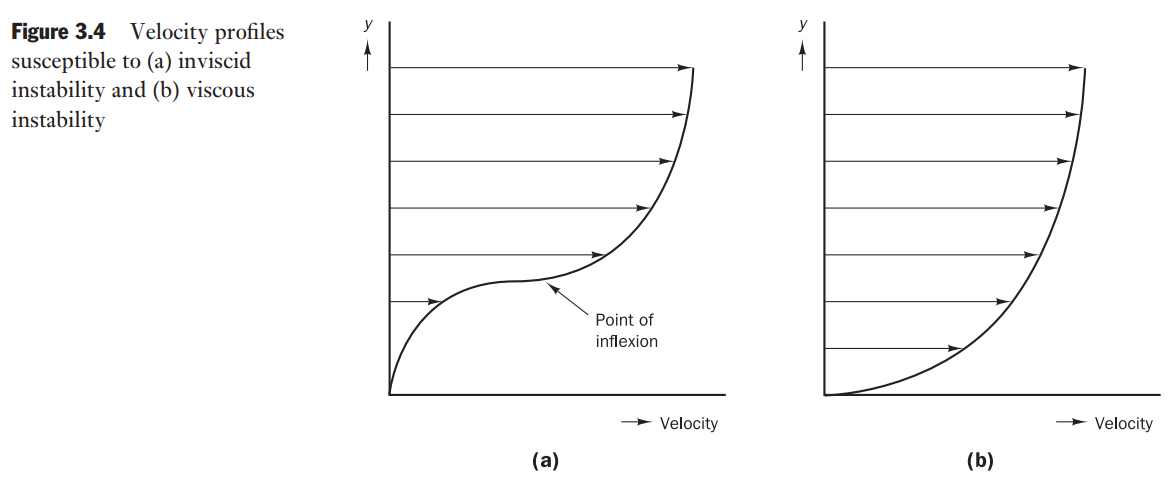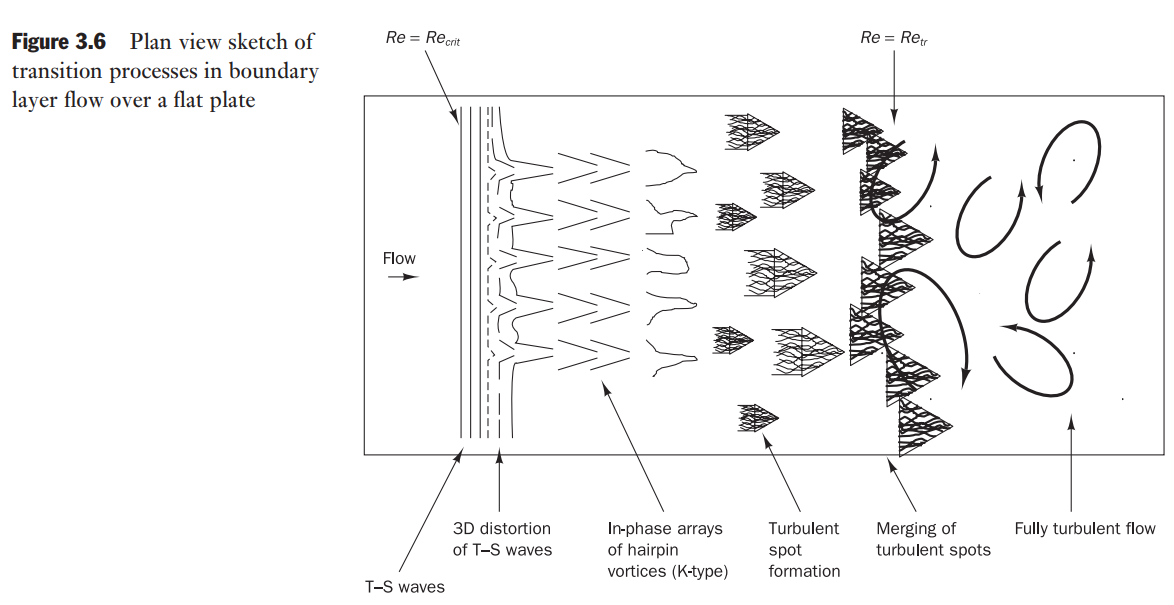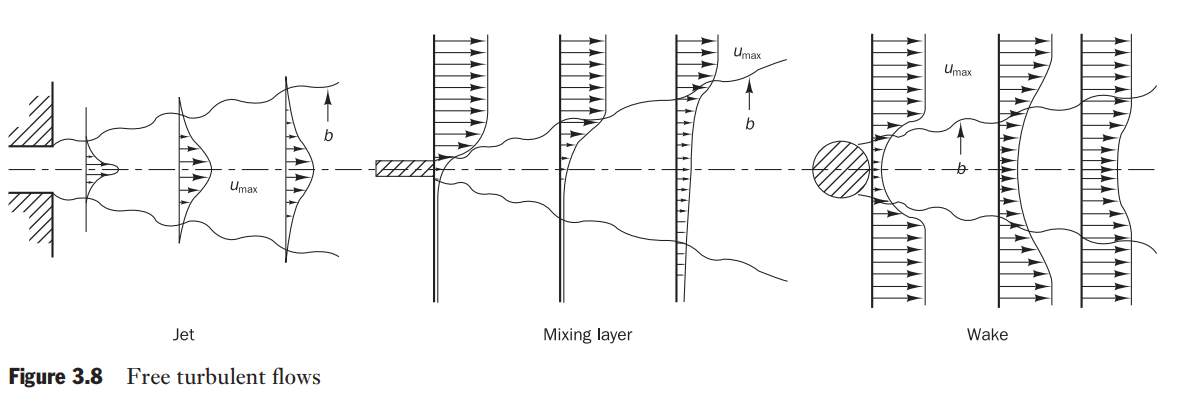CFD-FVM-03: Turbulence

What is turbulence
The velocity is decomposed into a steady mean value
The largest turbulent eddies interact with and extract energy from the mean flow by a process called vortex stretching
The characteristic velocity
- Length-scale ratio:
- Time-scale ratio:
- Velocity-scale ratio:
Typical values of
We except largest eddies to be highly anisotropic and the smallest eddies in a turbulent flow are isotropic.
Kolmogorov derived the universal spectral properties of eddies of intermediate size, which are sufficiently large for their behaviour to be unaffected by viscous action (as the larger eddies), but sufficiently small that the details of their behaviour can be expressed as a function of the rate of energy dissipation
Measurements showed that the constant
Transition from laminar to turbulent flow
Of particular interest in an engineering context is the prediction of the values of the Reynolds numbers
Inviscid instability
- contains a point of inflextion
- associated with jet flows, mixing layers and wakes and also with boundary layers over flat plates under the influence of an adverse pressure gradient
.
viscous instability
- without a point of inflextion
- associated with flows near solid walls such as pipe, channel and boundary layer flows without adverse pressure gradients
.

Transition to turbulence
Jet flow: an example of a flow with a point of inflexion

Boundary layer on a flat plate: an example of a flow without a point of inflexion

Pipe flow transition
The viscous theory of hydrodynamic stability predicts that these flows are unconditionally stable to infinitesimal disturbances at all Reynolds numbers. In practice, transition to turbulence takes place between
Final comments
A number of common features in the transition processes:
- the amplification of initially small disturbances
- the development of areas with concentrated rotational structures
- the formation of intense small-scale motions and finally
- the growth and merging of these areas of small-scale motions into fully turbulent flows
Descriptors of turbulent flow
- Mean component:
- Fluctuating component:
Time average or mean
Variance, r.m.s. and turbulence kinetic energy
The variance is also called the second moment of the fluctuations.
The total kinetic energy per unit mass
The turbulence intensity
Moments of different fluctuating variables
The variance is also called the second moment of the fluctuations. For different fluctuating variables, their second moment:
Higher-order moments
The third and fourth moments are related to the skewness (asymmetry) and kurtosis (peakedness), respectively:
Correlation functions - time and space
More detailed information relating to the structure of the fluctuations can be obtained by studying the relationship between the fluctuations at different times. The autocorrelation function
Similarly, shifted by a certain distance in space:
Probability density function
Probability density function
The average, variance and higher moments of the variable and its fluctuations are related to the probability density function as follows:
Characteristics of simple turbulent flows
Free turbulent flows:
- mixing layer
- jet flow
- wake
Boundary layer near solid walls: - flat plate boundary layer
- pipe flow
Free turbulent flows

- A mixing layer forms at the interface of two regions: one with fast and the other with slow moving fluid.
- In a jet a region of high-speed flow is completely surrounded by stationary fluid.
- A wake is formed behind an object in a flow, so here a slow moving region is surrounded by fast moving fluid.
The largest values of
Flat plate boundary layer and pipe flow
- Linear or viscous sub-layer - the fluid layer in contact with a smooth wall
- Log-law layer - the turbulent region close to a smooth wall
- Outer layer - the inertia-dominated region far from the wall
The effect of turbulent fluctuations on properties of the mean flow
Reynolds-averaged Navier—Stokes equations for incompressible flow
Some rules for
For a fluctuating vector quantity
Now we have the equations:
Replace by
The extra stress result from six additional stresses: three normal stresses
and three shear stresses
These extra turbulent stresses are called the Reynolds stresses.
The normal stresses are non-zero because they contain squared fluctuations. The shear stresses contain second moments associated with correlations between different velocity components, however, are also non-zero in practice due to the structure of the vortical eddies and very large compared with the viscous stresses.
Similarly, the time-average transport equation for scalar
Turbulent flow equations for compressible flows
Scalar transport equation: